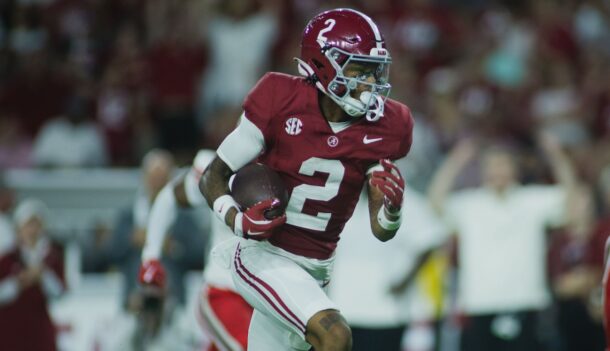Scoring points is fun, but defense once again drives success in the SEC.
A recent trend favoring offenses throughout the conference stalled in 2014, and the teams with the best defenses in the conference began to rise back to the top of the pack.
Looking back to the 2011 season, the last time the SEC was truly a defense-driven league, Arkansas led the conference in scoring at 36.8 points per game. The following year, three SEC teams averaged at least 37 points per game, and in 2013 four teams averaged at least that many points per contest.
The trend favoring explosive offenses was obvious, and success began to come to those who could score, and not those who could stop you from scoring.
This year, however, only one team in the SEC (Georgia) averaged more than 37.2 points per game.
Meanwhile, five SEC teams closed the regular season among the top 15 scoring defenses in the nation, and all five teams (Ole Miss, LSU, Alabama, Mississippi State and Missouri) were ranked in the most recent Associated Press poll.
In 2013, only two teams ranked in the top 15 in scoring defense, and neither of them was eventual conference champion Auburn or eventual East champion Missouri. Even though it was just last season, the culture in the SEC at the time was very much “offense rules, defense drools.”
But that is no longer the case, as it appears that in 2014 defense reigns supreme once again throughout the conference.
Another example: Alabama led all SEC defenses in 2013 by allowing just 4.83 yards per play, but in 2014 six teams in the conference (nearly half the SEC) held opponents to fewer yards per play, and five of them were ranked in Sunday’s AP poll.
There’s not only statistical evidence of superior defenses in 2014, but an obvious correlation between successful defense and a promising win percentage.
To be fair, some of the culture shift from offense back to defense is the result of departed talent. In just one season the SEC lost quarterbacks Johnny Manziel, Aaron Murray, Connor Shaw, A.J. McCarron and Zach Mettenberger; every one of those players currently resides on an NFL roster/practice squad.
Their collective departure took a lot of life out of offenses in the SEC, and it would be naive to think the rise of the SEC defenses wasn’t influenced at least a little by the exits of those signal callers.
Nevertheless, the teams with the best defenses were ultimately the best teams in 2014, and those with the worst defenses were ultimately the worst teams in the conference.
Just look at the conference’s perennial bottom-feeders: Kentucky and Vanderbilt. The Wildcats and Commodores boasted the conference’s two worst scoring defenses in 2014, and as a result they are the only two teams from the conference that won’t be bowling this winter. That’s not a coincidence.
In 2013, the SEC’s worst scoring defense belonged to Texas A&M, which still finished the season with nine wins in a difficult conference. The lack of a productive defense certainly didn’t help the Aggies, but it hardly held them back from closing the year ranked in the top 25.
But the best example of the culture shift back from offense to defense can be seen through Missouri’s back to back SEC East titles.
Last year, Mizzou won the East with the division’s No. 1 scoring offense, led by dual-threat quarterback James Franklin and dynamic big-play wideout Dorial Green-Beckham. This year, it won the East with the division’s best scoring defense, led by the best defensive end tandem in the conference: Shane Ray and Markus Golden. Again, that’s not a coincidence.
At the end of the day, it is still the team that scores more points that’s awarded victory. That concept will never change.
But as far as the SEC is concerned, it’s the team that allows fewer points that’s awarded victory when all is said and done.
A former newspaper reporter who has roamed the southeastern United States for years covering football and eating way too many barbecue ribs, if there is such a thing.







